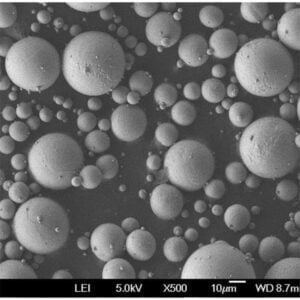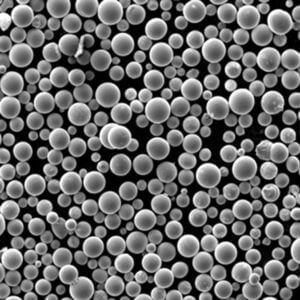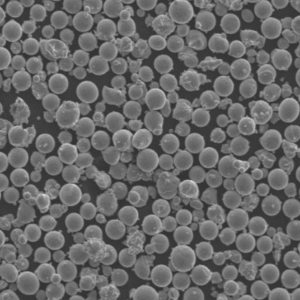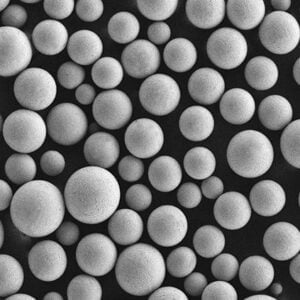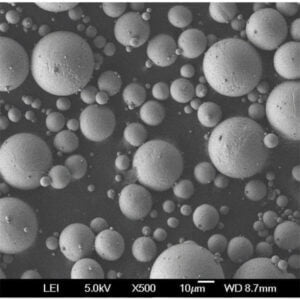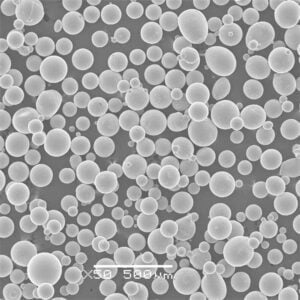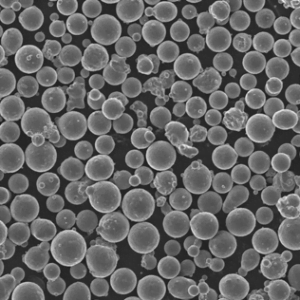introductie van verstuiving
Inhoudsopgave
Stel je een wereld voor waarin alles bestaat uit gigantische, onbruikbare brokken. Auto's zouden niet in garages passen, verf zou niet passen' Metalen onderdelen zouden omslachtig en onpraktisch zijn. Gelukkig hebben we een proces dat verstuiving dat materialen opsplitst in piepkleine deeltjes, waardoor een breed scala aan toepassingen mogelijk wordt. Maar wat is atomisering precies en hoe werkt het? Zet je schrap, want we duiken diep in de fascinerende wereld van het transformeren van bulkmaterialen in microscopische wonderen.
Procesprincipe van verstuiving
In wezen is verstuiving het proces waarbij een vloeibaar of vast materiaal in bulk wordt afgebroken tot veel fijnere druppels of deeltjes. Zie het als het verpulveren van een reusachtige chocoladereep tot cacaopoeder. Deze transformatie gebeurt via verschillende technieken, elk met zijn eigen voordelen en toepassingen. Hier zijn enkele van de meest gebruikte methoden:
- Verstuiving onder druk: Stel je een tuinslang op steroïden voor. Bij verstuiving onder druk wordt vloeistof onder hoge druk door een klein mondstuk geperst. De pure kracht breekt de vloeistof in een fijne nevel.
- Verstuiving met twee vloeistoffen: Deze methode introduceert een gas (meestal lucht) naast de vloeistof. Het gas met hoge snelheid knipt de vloeistof in kleinere druppels wanneer het de spuitmond verlaat.
- Roterende verstuiving: Stel je een blender met hoge snelheid voor. Bij roterende verstuiving wordt een snel draaiende schijf gebruikt om de vloeistof te breken terwijl deze over het oppervlak stroomt.
- Ultrasone verstuiving: Deze methode maakt gebruik van geluidsgolven met een hoge frequentie om microscopische trillingen in de vloeistof te creëren, waardoor deze uiteenvalt in minuscule druppeltjes.
De keuze van de verstuivingstechniek hangt af van de gewenste deeltjesgrootte, materiaaleigenschappen en de uiteindelijke toepassing.
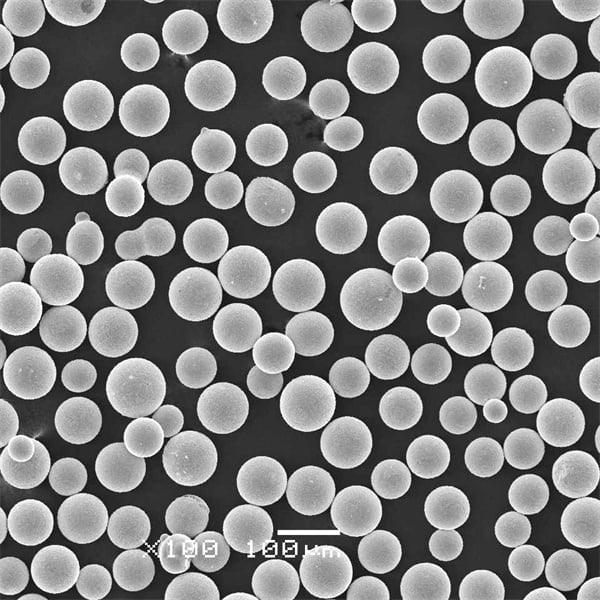
Proceskenmerken van Verneveling
De magie van verneveling ligt in de unieke eigenschappen die het aan materialen verleent. Hier worden enkele belangrijke voordelen nader bekeken:
- Vergroot oppervlak: Wanneer een materiaal wordt afgebroken tot kleine deeltjes, neemt het oppervlak enorm toe. Stel je een verfrommeld stuk papier voor tegenover een plat vel. Het verfrommelde papier heeft meer blootgesteld oppervlak, toch? Hetzelfde principe geldt voor verstuiving. Dit grotere oppervlak maakt het materiaal reactiever en efficiënter in verschillende toepassingen.
- Verbeterde controle: Stel je voor dat je een gedetailleerd schilderij probeert te schilderen met een enorme verfkwast versus een kwast met een fijne punt. Verstuiving maakt een veel fijnere controle mogelijk over het aanbrengen van materialen. Bij 3D printen bijvoorbeeld, worden metaalpoeders precies laag voor laag aangebracht met behulp van verstuivingstechnieken.
- Verbeterde eigenschappen: Verstuiving kan soms de eigenschappen van materialen veranderen. Sommige geatomiseerde metaalpoeders vertonen bijvoorbeeld een verbeterde sterkte en taaiheid in vergelijking met hun bulk tegenhangers.
Verneveling heeft echter ook een aantal beperkingen:
- Energieverbruik: Het afbraakproces van materialen kan energie-intensief zijn, afhankelijk van de gekozen techniek.
- Controle van de deeltjesgrootte: Het kan een uitdaging zijn om een uniforme en consistente deeltjesgrootte te bereiken, vooral voor sommige materialen.
- Materiaalbeperkingen: Niet alle materialen zijn gemakkelijk te vernevelen. Sommige materialen kunnen te stroperig zijn of klonteren tijdens het proces.
Metaalpoeders: De bouwstenen van morgen
Een van de meest opwindende toepassingen van atomisering is het maken van metaalpoeders. Deze minuscule metaaldeeltjes, variërend in grootte van enkele micrometers tot honderden micrometers, zorgen voor een revolutie in verschillende industrieën, met name in additive manufacturing (3D printen). Hier volgt een nadere blik op enkele van de populairste metaalpoeders die worden gebruikt bij 3D printen:
| Type | Samenstelling | Eigenschappen | Toepassingen |
|---|---|---|---|
| Roestvrij staal 316L | Fe (ijzer), Cr (chroom), Ni (nikkel), Mo (molybdeen) | Uitstekende corrosiebestendigheid, hoge sterkte, biocompatibel | Medische implantaten, luchtvaartonderdelen, chemische verwerkingsapparatuur |
| Titaan 6Al-4V (graad 23) | Ti (titanium), Al (aluminium), V (vanadium) | Hoge sterkte-gewichtsverhouding, goede biocompatibiliteit, uitstekende corrosiebestendigheid | Ruimtevaartonderdelen, biomedische implantaten, sportartikelen |
| Inconel 625 | Ni (Nikkel), Cr (Chroom), Mo (Molybdeen), Fe (IJzer) | Uitzonderlijke prestaties bij hoge temperaturen, uitstekende weerstand tegen oxidatie | Turbineschoepen, warmtewisselaars, chemische verwerkingsapparatuur |
| Aluminium AlSi10Mg | Al (Aluminium), Si (Silicium), Mg (Magnesium) | Goede lasbaarheid, hoge sterkte-gewichtsverhouding, uitstekende corrosiebestendigheid | Auto-onderdelen, ruimtevaartonderdelen, consumentenelektronica |
| Koper | Cu (Koper) | Hoge thermische en elektrische geleidbaarheid | Warmtewisselaars, elektrische onderdelen, elektroden |
| Nikkel | Ni (Nikkel) | Uitstekende corrosiebestendigheid, goede vervormbaarheid | Chemische verwerkingsapparatuur, elektronica, batterijcomponenten |
| Maragingstaal | Fe (ijzer), Ni (nikkel), Mo (molybdeen), Ti (titanium), Al (aluminium) | Hoge sterkte, uitstekende taaiheid, goede dimensionale stabiliteit | Ruimtevaartonderdelen, gereedschappen, mallen en matrijzen |
| Gereedschapstaal | Fe (IJzer), C (Koolstof), Cr (Chroom), V (Vanadium), Mo (Molybdeen) | Uitstekende slijtvastheid, hoge hardheid | Gereedschappen en matrijzen, ponsen, snijmessen |
| Inconel 718 | Ni (Nikkel), Cr (Chroom), Fe (IJzer), Nb (Niobium), Mo (Molybdeen) | Hoge sterkte bij hoge temperaturen, goede kruipweerstand | Turbineschoepen, onderdelen van raketmotoren, warmtewisselaars |
| Nikkel Aluminium Brons (NAB) | Cu (Koper), Ni (Nikkel), Al (Aluminium), Fe (IJzer) | Hoge sterkte, uitstekende corrosiebestendigheid, goede slijtvastheid | Mariene onderdelen, tandwielen, lagers |
| Wolfraam | W (wolfraam) | Zeer hoog smeltpunt, uitstekende slijtvastheid | Elektroden, filamenten voor additieve productie, verwarmingselementen |
Het juiste metaalpoeder kiezen
Het selecteren van het ideale metaalpoeder voor je 3D printproject hangt af van een aantal cruciale factoren:
- Gewenste eigenschappen: Houd rekening met de mechanische eigenschappen (sterkte, vervormbaarheid, slijtvastheid), corrosiebestendigheid, thermische geleidbaarheid en biocompatibiliteit (indien van toepassing) die nodig zijn voor het uiteindelijke onderdeel.
- Toepassing: Het beoogde gebruik van het 3D-geprinte onderdeel zal de keuze van het metaalpoeder sterk beïnvloeden. Ruimtevaartonderdelen vereisen bijvoorbeeld materialen met een hoge sterkte-gewichtsverhouding zoals titanium, terwijl warmtewisselaars baat kunnen hebben bij de hoge thermische geleidbaarheid van koper.
- Compatibel met printers: Verschillende 3D printers hebben verschillende mogelijkheden wat betreft de soorten metaalpoeders die ze kunnen verwerken. Zorg ervoor dat het gekozen poeder compatibel is met de laser- of elektronenstraal smelttechnologie van uw specifieke printer.
- Kosten: Metaalpoeders kunnen aanzienlijk in prijs variëren. Factoren zoals de zeldzaamheid van het materiaal, de complexiteit van de verwerking en de vraag spelen allemaal een rol.
3D printen voorbij: Een universum van toepassingen
Hoewel 3D-printen een belangrijke drijfveer is voor de ontwikkeling van metaalpoeder, hebben deze veelzijdige materialen toepassingen die veel verder gaan dan additieve productie. Hier zijn een paar voorbeelden:
- Metaalspuitgieten (MIM): Bij dit proces worden metaalpoeders gemengd met een bindmiddel om complexe vormen te maken door middel van spuitgieten. Het bindmiddel wordt vervolgens verwijderd door middel van een thermisch ontbindingsproces, waardoor een metalen onderdeel overblijft dat bijna de vorm van een net heeft. MIM is ideaal voor de productie van grote aantallen ingewikkelde metalen onderdelen.
- Thermisch spuiten: Metaalpoeders worden gebruikt in thermische spuittechnieken om oppervlakken te coaten met specifieke eigenschappen. Thermisch spuiten kan bijvoorbeeld worden gebruikt om een slijtvaste laag wolfraamcarbide aan te brengen op snijgereedschap of een corrosiebestendige laag nikkel op een stalen pijp.
- Bekleding: Metaalpoeders kunnen worden gebruikt in claddingprocessen om een composietmateriaal te maken met een kern en een gelijmde buitenlaag van een ander metaal. Deze techniek maakt het mogelijk om de sterkte van verschillende materialen in één component te combineren.
De toekomst van metaalpoeders: Helderder dan ooit
De ontwikkeling van metaalpoeders is voortdurend in ontwikkeling, waarbij onderzoekers de grenzen van deeltjesgrootte, vorm en samenstelling verleggen. Hier zijn enkele opwindende trends die de toekomst van metaalpoeders vormgeven:
- Nanodeeltjes: Metalen nanodeeltjes bieden unieke eigenschappen zoals verbeterde sterkte en verbeterde reactiviteit. Onderzoekers onderzoeken het gebruik van metalen nanodeeltjes in verschillende toepassingen, waaronder katalysatoren en composietmaterialen.
- Aangepaste legeringen: Het wordt steeds beter mogelijk om metaalpoedersamenstellingen op maat te maken om specifieke eigenschappen te verkrijgen. Dit opent deuren voor de ontwikkeling van nieuwe legeringen met eigenschappen die geoptimaliseerd zijn voor specifieke toepassingen.
- Gerecyclede poeders: Duurzaamheid is een groeiende zorg en de ontwikkeling van efficiënte methoden voor het recyclen van metaalpoeders uit schrootmateriaal wordt steeds belangrijker. Dit zal niet alleen de impact op het milieu verminderen, maar metaalpoeders ook kosteneffectiever maken.
Metaalpoeders revolutioneren de manier waarop we producten ontwerpen en produceren. Met hun veelzijdigheid, unieke eigenschappen en steeds groter wordende toepassingsbereik zijn metaalpoeders klaar om een centrale rol te spelen in het vormgeven van de toekomst van de productie.
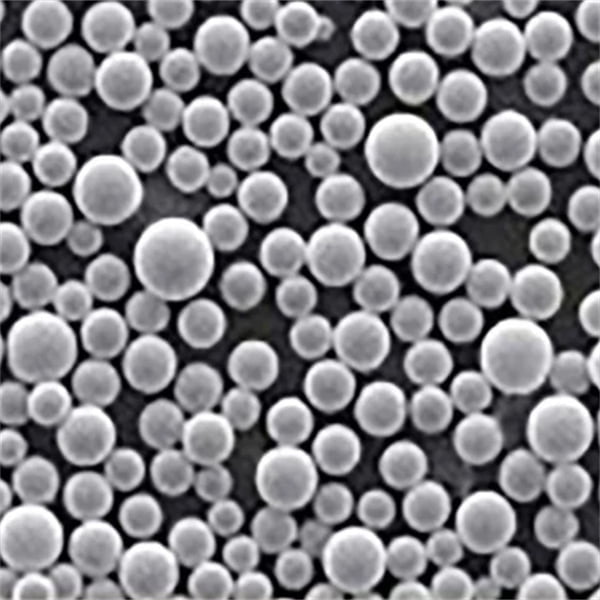
FAQ
| Vraag | Antwoord |
|---|---|
| Wat is metaal verstuiving? | Metaalverstuiving is het proces waarbij bulkmetaal wordt afgebroken tot fijne deeltjes (poeders) met behulp van verschillende technieken zoals drukverstuiving, tweevloeistofverstuiving en roterende verstuiving. |
| Wat zijn de voordelen van het gebruik van metaalpoeders? | Metaalpoeders bieden verschillende voordelen, zoals een groter oppervlak, betere controle over de materiaaltoepassing, verbeterde eigenschappen en de mogelijkheid om complexe vormen te creëren via additieve productie en andere technieken. |
| Wat zijn enkele van de beperkingen van metaalpoeders? | Metaalpoeders hebben ook enkele beperkingen, zoals een hoog energieverbruik tijdens het verstuivingsproces, problemen om een perfect uniforme deeltjesgrootte te bereiken en beperkingen in de soorten materialen die gemakkelijk verstoven kunnen worden. |
| Wat zijn de verschillende soorten metaalpoeders die worden gebruikt bij 3D printen? | Er wordt een grote verscheidenheid aan metaalpoeders gebruikt bij 3D printen, elk met verschillende eigenschappen. Enkele populaire opties zijn roestvrij staal 316L (bekend om zijn corrosiebestendigheid en biocompatibiliteit), titanium 6Al-4V (biedt een goede balans tussen sterkte, gewicht en biocompatibiliteit) en Inconel 625 (ideaal voor toepassingen bij hoge temperaturen vanwege de uitzonderlijke oxidatiebestendigheid). |
| Hoe kies ik het juiste metaalpoeder voor mijn 3D printproject? | Het selecteren van het ideale metaalpoeder hangt af van verschillende factoren. Denk aan de gewenste eigenschappen voor het uiteindelijke onderdeel (sterkte, gewicht, corrosiebestendigheid, enz.), de toepassing van het 3D-geprinte onderdeel, compatibiliteit met de technologie van uw specifieke 3D-printer en natuurlijk de kosten van het metaalpoeder. |
| Wat zijn enkele toepassingen van metaalpoeders buiten 3D-printen? | Metaalpoeders hebben een groot aantal toepassingen buiten additieve productie. Ze worden gebruikt in Metal Injection Molding (MIM) om ingewikkelde metalen onderdelen te maken, thermisch spuiten om oppervlakken te coaten met specifieke eigenschappen (zoals slijtvastheid) en cladding om composietmaterialen te maken met een kern en een gebonden buitenlaag van een ander metaal. |
| Wat zijn de toekomstvooruitzichten voor metaalpoeders? | De toekomst van metaalpoeders is ongelooflijk veelbelovend. Onderzoekers verkennen spannende gebieden zoals het gebruik van metalen nanodeeltjes voor verbeterde eigenschappen, de ontwikkeling van aangepaste legeringen met op maat gemaakte eigenschappen en zelfs het gebruik van gerecyclede metaalpoeders voor een duurzamere aanpak. |
| Waar kan ik meer te weten komen over metaalverstuiving en metaalpoeders? | Online en in bibliotheken zijn talloze bronnen beschikbaar die dieper ingaan op metaalverstuiving en metaalpoeders. Gerenommeerde websites van metaalpoederfabrikanten, brancheverenigingen en onderzoeksinstellingen kunnen waardevolle inzichten verschaffen. Daarnaast gaan academische tijdschriften en publicaties over materiaalkunde en engineering vaak in op de vooruitgang in metaalpoedertechnologie. |
Delen op
MET3DP Technology Co, LTD is een toonaangevende leverancier van additieve productieoplossingen met hoofdkantoor in Qingdao, China. Ons bedrijf is gespecialiseerd in 3D printapparatuur en hoogwaardige metaalpoeders voor industriële toepassingen.
Onderzoek om de beste prijs en een op maat gemaakte oplossing voor uw bedrijf te krijgen!
gerelateerde artikelen
Over Met3DP
Recente update
Ons product
NEEM CONTACT MET ONS OP
Nog vragen? Stuur ons nu een bericht! Na ontvangst van uw bericht behandelen wij uw verzoek met een heel team.

Metaalpoeders voor 3D printen en additieve productie
BEDRIJF
PRODUCT
contact informatie
- Qingdao-stad, Shandong, China
- [email protected]
- [email protected]
- +86 19116340731






